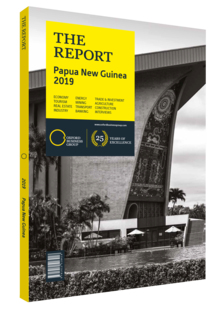Papua New Guinea plans greater capital outlay and deficit reduction
Efforts to improve the business environment and promote private investment in non-extractive sectors ramped up in 2018 with a new development plan and clearer fiscal priorities. Prior to the pickup in international commodity prices that year, a lengthy downturn in global demand, weak agriculture performance and production halts at key mines weighed heavily on revenue. In August 2016 the administration of former prime minister Peter O’Neill revealed the 2017-21 medium-term budget plan, underpinned by fiscal consolidation and moves to increase efficiency in distributing budgeted funds.
With economic conditions improving in the second half of 2018, the situation is conducive to reducing deficits through more rationalised fiscal handling, which will also help support the funding of needed projects. The O’Neill administration made strong financing commitments in 2018 that were incorporated in the Medium-Term Development Plan III (MTDP III) for 2018-22, with spending on “economic growth areas” such as agriculture, fisheries, forestry, tourism and manufacturing slated to rise from 5% of total capital expenditure to 12%. The Medium-Term Fiscal Strategy 2018-22, published around the same time, aims to reduce the fiscal deficit from 2.5% of GDP in 2018 to 1% in 2022, as well as lower the debt-to-GDP ratio to under 30%.
Implementation
While the new plans signal a shift to greater capital spending and healthier metrics, there are still concerns over a lack of usable data and clear guidelines for resource allocation, as well as fragmented coordination between national agencies. To tackle this, the MTDP III calls for a National Data Collection Centre to supply accurate and reliable data, and to help relevant state bodies work together. In all, the funds set aside for “public sector strengthening” total PGK13.49bn ($4.1bn) for the five years of the MTDP III. “The government is currently focusing on good governance, which may result in structural changes that benefit PNG in the long run,” Michael Scantlebury, managing director of local conglomerate Steamships Trading Company, told OBG. “These changes might also result in better law and order, a slowdown in capital outflows and a more transparent investment framework.”
Increasing revenue to support more expenditure is another focus. Efforts to boost revenue collection are expected to result in fiscal receipts increasing by 48%, from PGK10.98bn ($3.3bn) in 2017 to PGK16.25bn ($4.9bn) in 2022. Over the same period state-owned enterprises hope to see their collective revenue rise from PGK10bn ($3bn) to PGK15bn ($4.5bn) through greater efficiency, coupled with a stronger macroeconomic environment. Furthermore, the proportion of land for productive purposes – a long-standing economic constraint – is targeted to increase from less than 5% to 20% of the total area. The National Land Development Programme is expected to receive PGK40m ($12.1m) between 2019 and 2022 in this regard. Annual employment growth is forecast to increase from 3.4% to 7% over the plan period as well.
Looking Ahead
The resignation of O’Neill in May 2019 and the subsequent Cabinet reshuffle under new Prime Minister James Marape led to some shortterm uncertainty in the business environment in mid-2019, yet the MTDP III remains a guiding hand for the economy in the coming years. Discussions were being held in mid-2019 over revising the way debt is calculated and GDP is forecast, and a more conservative approach to calculating these figures could be the result of the conversations. This would lead to a revision of fiscal policy anchors that were based on earlier methodologies. Regardless of the outcome, the period through to 2022 is set to be characterised by more efficient spending, more coordinated execution and continued efforts to promote investment outside the extractive industries.
You have reached the limit of premium articles you can view for free.
Choose from the options below to purchase print or digital editions of our Reports. You can also purchase a website subscription giving you unlimited access to all of our Reports online for 12 months.
If you have already purchased this Report or have a website subscription, please login to continue.

